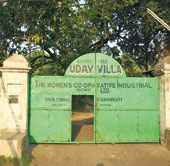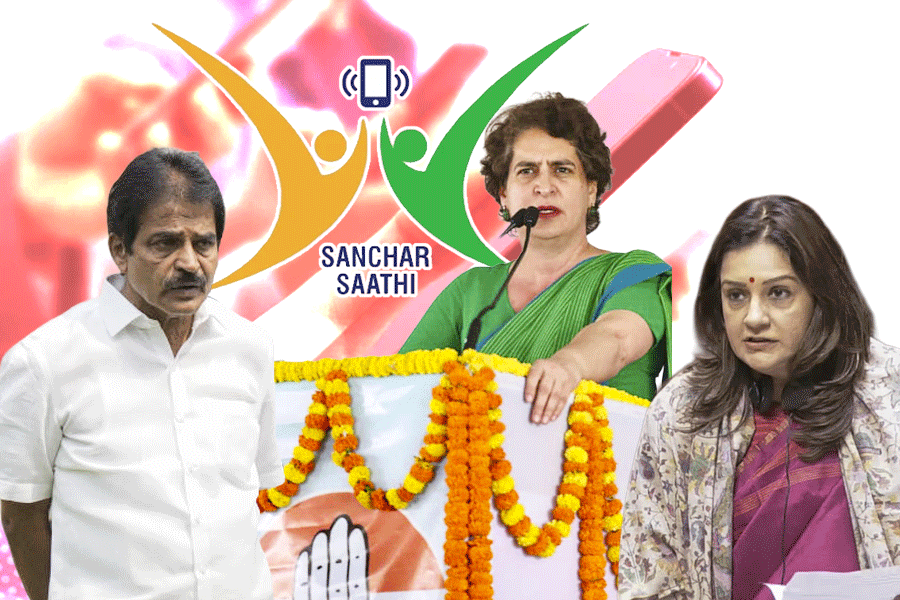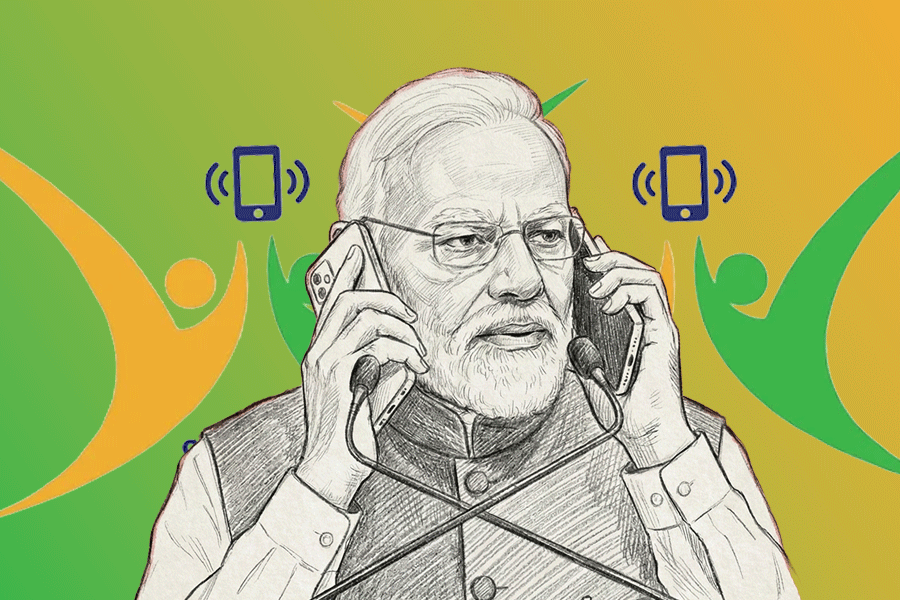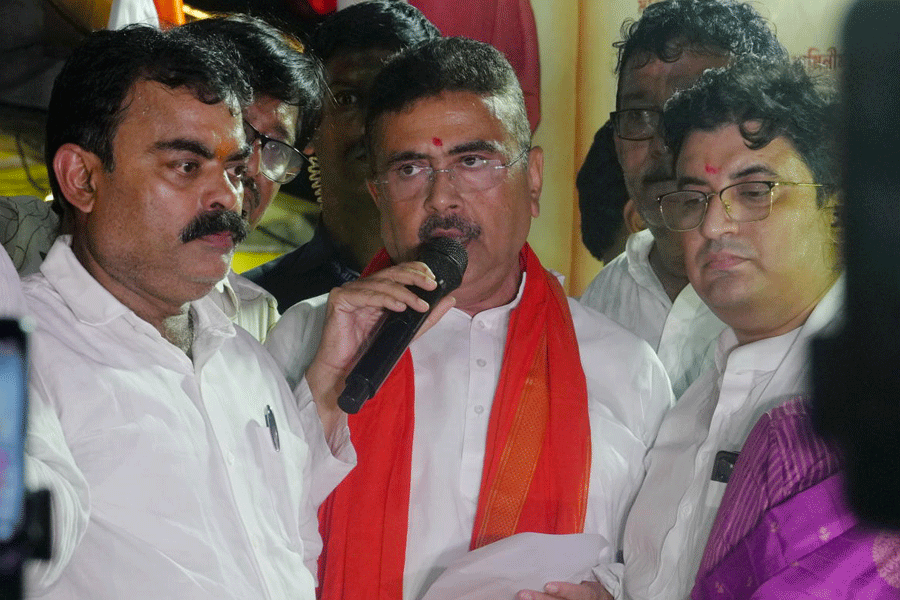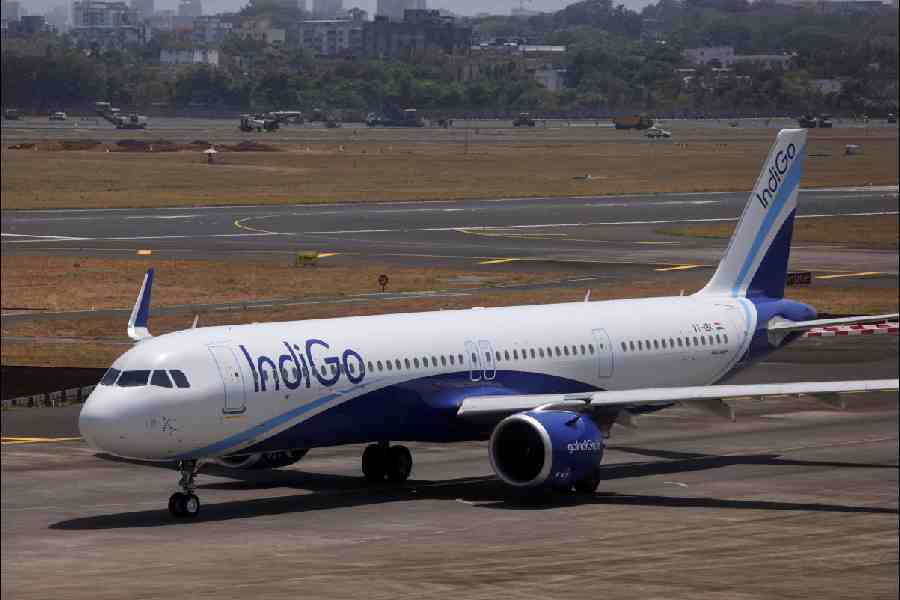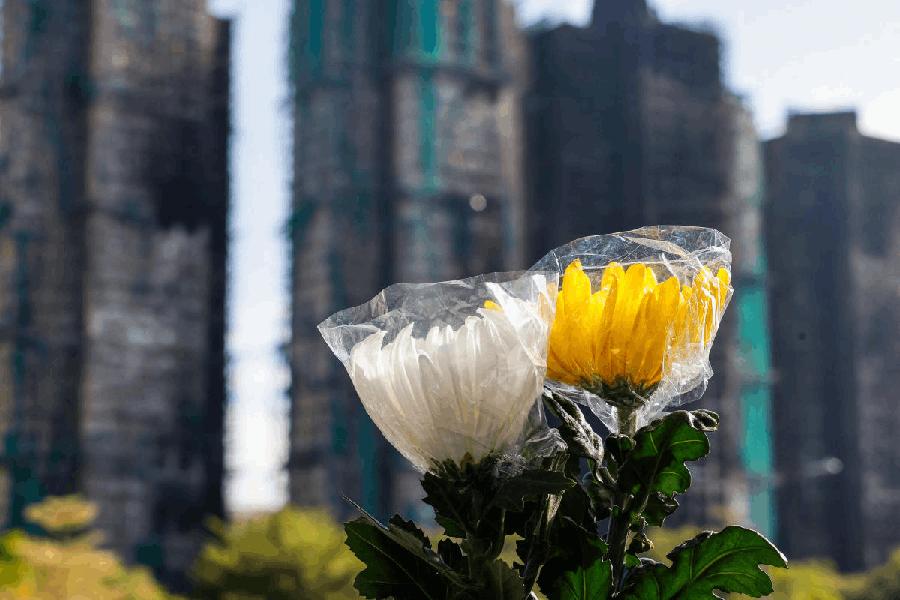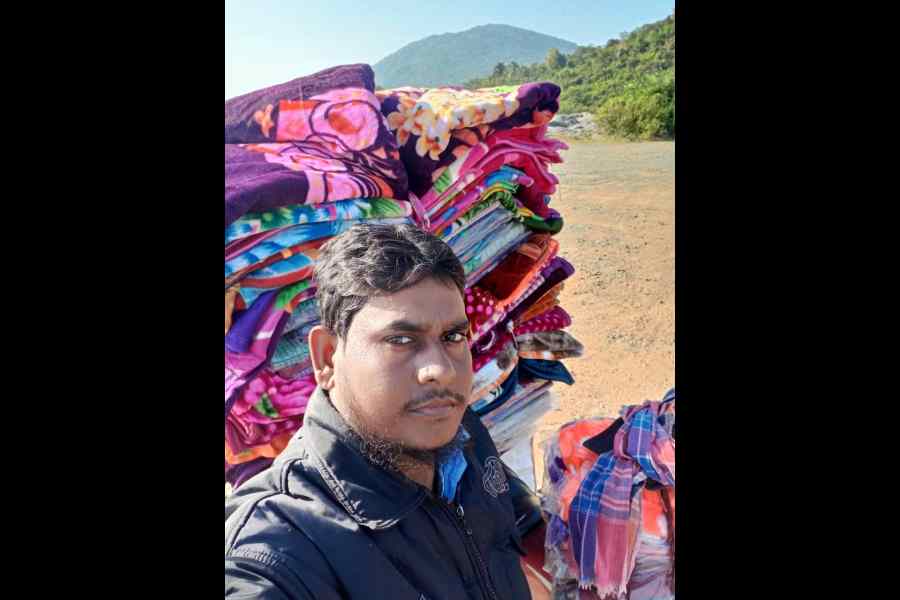 |
| The gate of Uday Villa. Picture by Aranya Sen |
Kamarhati on Barrackpore Trunk Road once boasted the garden houses of many wealthy residents of Calcutta like Motilal Sil and Sagar Datta, after whom a local hospital is named. The ornithologist, Satyachurn Law, had an aviary there that is now a business school. The Jews owned a lot of property here, including the Agarpara Jute Mill and the cigarette factory opposite it where Regent cigarettes are still manufactured.
On the same stretch is situated the walled estate of Uday Villa, and as in most of these pleasances, the cover of trees inside is thick and luxuriant.
The tin gate is painted green and on it are written the words: The Women’s Cooperative Industrial Home, Uday Villa, 1832. On both sides are the brick and mortar fragments of a more ornamental gateway, something like the remnant of the entrance of Emerald Bower that is closer to Shyambazar.
On a small marble plaque on the gateway are inscribed the words in faded letters: Odoy Villa, obviously an anglicised version of the common enough Bengali name. Above the gate is a crudely painted signboard which says that a basic school operates there. On the left of the estate is a largish concrete building, almost derelict.
The drive leads to the sprawling estate with water bodies on both sides shaded by the towering trees. At its end are two sheds again on either side of the pathway. The larger one on the left looks derelict, while the one on the right is used as storage space. I looked for the “villa” in vain, for without the green the place looks like any other industrial estate fallen into disuse, and there are countless such properties in this state.
 |
| A water body inside Uday Villa. Picture by Aranya Sen |
Only about a quarter century ago, Uday Villa was a thriving training centre for women refugees from East Bengal and for widows and other such hapless creatures. This also used to be the design centre of the All India Handicrafts Board, where artists and studio potters, who became eminent later, used to work.
The refugee rehabilitation centre was started by Lady Abala Bose, Jagadish Chandra Bose’s wife, and was run by Bina Das, who was murdered in 1984 on the premises by the darwan. A small brick memorial was erected for Bina Das in front of the rundown old building, and according to an inscription on it, she was born in 1919.
Art historian Pranabranjan Ray says it was a small scale industry project to revive cottage and home industry with appropriate technology and design. Under sculptor Pravas Sen, “it was a living laboratory of craft technology”. The design centre was in Ballygunge Circular Road, and whenever more space was required to work on something new, it was done at Uday Villa.
It was so famous then that foreigners used to visit it. Pravas Sen was an ideologically inspired artist who had struck upon the technology of creating glazed tiles, although it was left to others to exploit it financially.
Two pioneering studio potters — Ira Chaudhury and Kalindi Jena — spoke about their experiences at Uday Villa. Ira Chaudhury, who is in her 80s and lives in Delhi, worked for about a month and a half at Uday Villa in 1959. The widow of sculptor Sankho Chaudhury said she was pregnant with her third child then and could not take the long, daily bus journey from Lansdowne Road, where she lived, to Uday Villa, and gave up. She and her husband knew Pravas Sen from their Santiniketan days, and Uday Villa was a “rewarding experience”.
Leading studio potter Nirmala Patwardhan, who was in her 80s when she died recently, joined Uday Villa subsequently.
The well-known West German ceramic technician named Wilhelm Moesch, who came to India under a Ford Foundation grant to help develop low temperature glazes, worked here. He had worked in Delhi and Khurja, and was “very upset” by their (local artists) attitude to work, Ira Chaudhury said in a telephone interview.
She said the saris produced at Uday Villa in jacquard looms were very beautiful. After the Partition, sari production in Dhaka was hit as the Basaks or Hindu weavers, who had emigrated to India, had turned into dealers and had stopped weaving themselves. The Muslim weavers had stayed back in East Pakistan. But there was a scarcity of dyers in East Pakistan as they were mostly Hindus. So jacquard looms as a viable alternative were being experimented with at Uday Villa.
Indeed, the weaving centre here produced textiles of such high quality that a sari was created over a period of three to four months as a gift for Queen Elizabeth when she visited India, says sculptor Madhab Bhattacharya, 76, who lives in Bagbazar. He remembers that the actress Nargis had once dropped by at Uday Villa. The other artists who worked there were Shyamadas Sengupta and Gosto Kumar.
Another pioneering studio potter who sojourned here was Kalindi Jena of Indupur in Cuttack district of Orissa. He said over the telephone from Ahmedabad, where he lives at the National Institute of Design with his son Shantanu, that he had been trained at Sebagram in Madhya Pradesh under the tutelage of early studio potter Debiprasad Gupta. But Jena chose to move to Pravas Sen’s house in Calcutta. He joined Uday Villa in 1959 at the age of 30 as a temporary designer and his salary was Rs 6 per day.
An exhibition of his pottery and the works of Gosta Kumar was held at Artistry House in Park Street and this was opened by then governor Padmaja Naidu. Subsequently, Jena ’s salary increased to Rs 8 per day, and he was there for two years.
Ajay Ghoshal, 78, a long-time resident of Ariadah belonging to the well-known Ghoshal family, says the estate belonged to Uday Bose and Nimai Bose, who were attorneys of Calcutta High Court.
They looked after the Ghoshal family estate and built Uday Villa in the 19th century. It used to be a gorgeous property on 20 acres, complete with a mansion, statuary, gardens and the jheels or water bodies. But after the partition, refugees from across the border appropriated much of the land and water bodies in 1950. Refugees from Burma too came and settled there.
Then the government decided to acquire the property, and in 1952 Abala Bose opened the Womens’ Cooperative Industrial Home, which became famous for its textiles, dolls, cane and bamboo furniture, pottery and hand-painted china.
Everybody from Jawaharlal to BC Roy patronised the project. Bina Das was awarded Padmasree but after her murder, Uday Villa fell into disuse and valuable equipment turned into junk. The looms in the weaving centre lie idle.
Local politicians and promoters tried to grab the land. It became impossible for the management to look after the estate because of political interference. Finally, the high court has appointed an advocate named Bikash Ranjan Niyogi as special officer to run the administration.
Niyogi says even in its present state the estate covers seven acres. Uday Villa has 25 employees, although there is little work. A shed has been rented out but rent is not received. The jheels have been leased out, the rest of the estate is festering. Unless the cooperative department decides to come to its rescue it would be difficult to protect Uday Villa.

